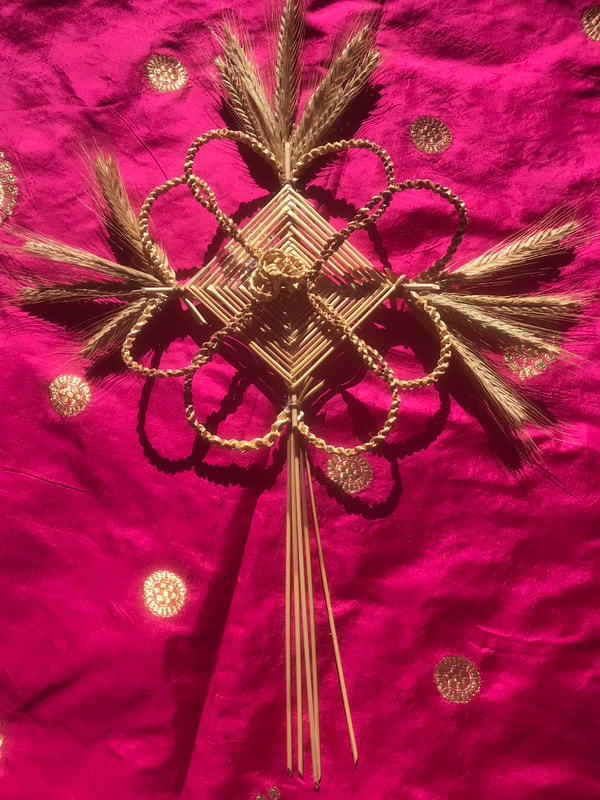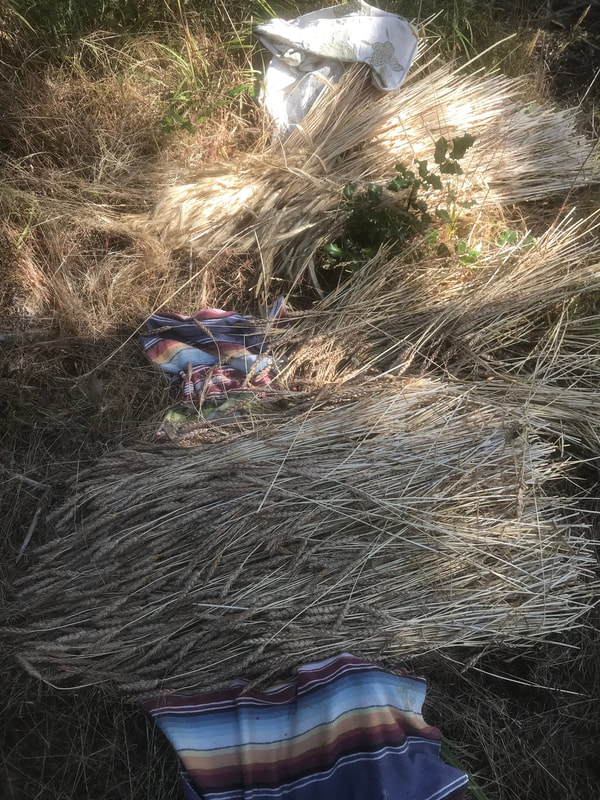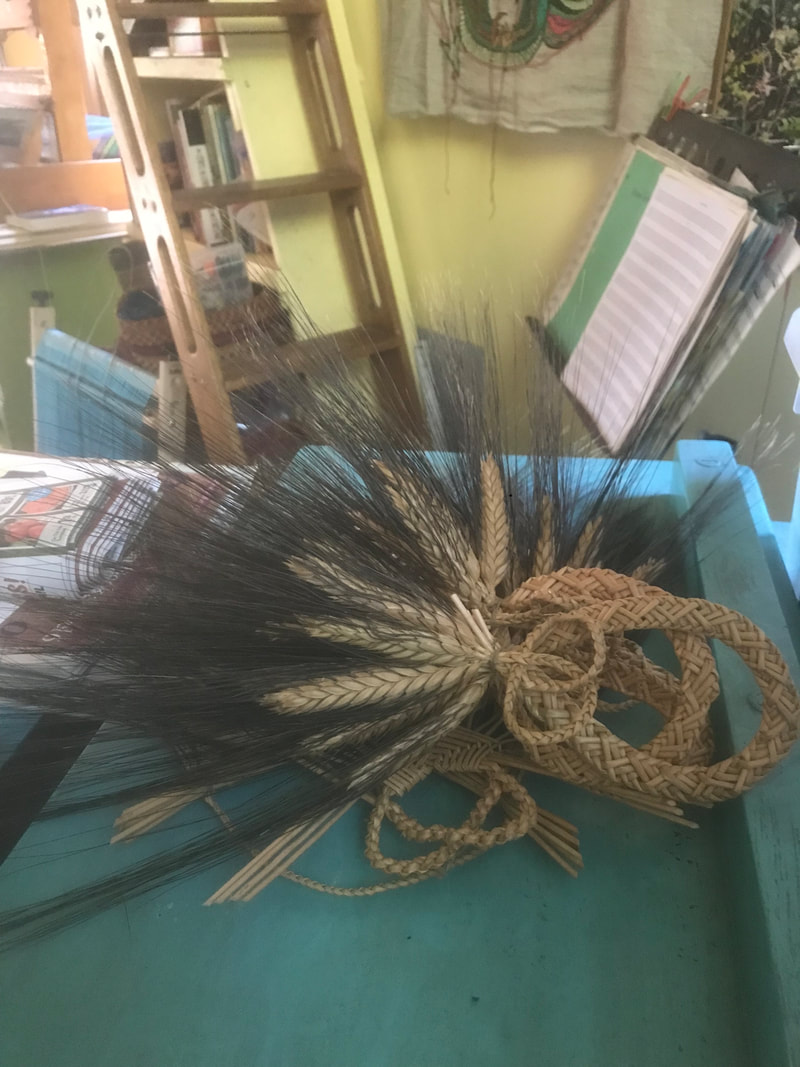Since I plan to sell at the Lopez Farmers Market, I thought it would be nice to design a straw weaving specifically for Lopez Island. Something that reflected the strong feeling of community, and that embodied the love and care that we strive for here. This first version took me several hours and some creative ... not cursing, but, let's just say remarking. I want my work to be affordable so it will take some time to settle on a technique that does not involve excessive time. Anyway, I'm happy with it as it stands.
|
Spent a lovely morning harvesting rye and wheat at North Star Farm. Using scissors. Afterwards, we went to the hardware store and bought two kinds of sickle to see which one works best.
Now, the bundles are drying in the morning sun, except the rye straws that have already been cleaned and are in the soaking tray. What does "cleaned" mean? Well, think of bamboo. The stem parts (the culms) are divided by nodes, from which the leafy blades grow. In rye and wheat, the blades surround the stem for a few inches as a sheath. Then there's a ligule which divides the sheath part of the blade from the leafy part, and then there's the leaf. To make a clean looking design, only the culm closest to the spicule or seedhead is used, so I have to remove the blade and sheath down to the first node, or knee. When the straw is fresh, this involves broken fingernails and fussy finicky finagling. After the straw is a bit dry, the whole process is easier. After retiring from teaching in a rural K-8 classroom, I've been working for my son-in-law's firewood business. I love our hydraulic splitter!
But, it has come to my attention that I am only getting older. Every day, in fact. So, I need something to eke out my scanty retirement payments that doesn't rely on superhuman upper body strength. Since I was an art teacher for so many years, I'm spoiled for choice. Linoleum block prints? Tapestry weaving? Upcycled books? After re-connecting with a dear friend who was once the Wheat Weaving Queen of the Renaissance Faires, I apprenticed to her and am learning the business. This includes talking to local wheat, rye and barley growers and trying out what designs work best with the various kinds of grain stalks available. Also, of course, re-learning the different weaves - hairbraid, rustic, diamond, fill-the-gap, and so on. A great way to spend a summer! The image is of the top of my piano. Sharing a tiny house with a houseguest, a dog, a grand piano, a table loom, and drying wheat is not as challenging as you might think, since it's summer. Once it starts raining, well ... |
Straw WeavingAlso known as Corn Dollies or Wheat Weaving ArchivesCategories |



 RSS Feed
RSS Feed
